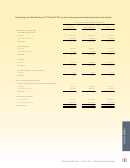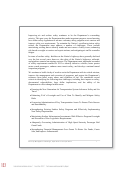Performance And Accountability Report - Fiscal Year 2013 - Federal Aviation Administration - U.s. Department Of Transportation Page 92
ADVERTISEMENT
 1
1  2
2  3
3  4
4  5
5  6
6  7
7  8
8  9
9  10
10  11
11  12
12  13
13  14
14  15
15  16
16  17
17  18
18  19
19  20
20  21
21  22
22  23
23  24
24  25
25  26
26  27
27  28
28  29
29  30
30  31
31  32
32  33
33  34
34  35
35  36
36  37
37  38
38  39
39  40
40  41
41  42
42  43
43  44
44  45
45  46
46  47
47  48
48  49
49  50
50  51
51  52
52  53
53  54
54  55
55  56
56  57
57  58
58  59
59  60
60  61
61  62
62  63
63  64
64  65
65  66
66  67
67  68
68  69
69  70
70  71
71  72
72  73
73  74
74  75
75  76
76  77
77  78
78  79
79  80
80  81
81  82
82  83
83  84
84  85
85  86
86  87
87  88
88  89
89  90
90  91
91  92
92  93
93  94
94  95
95  96
96  97
97  98
98  99
99  100
100  101
101  102
102  103
103  104
104  105
105  106
106  107
107  108
108  109
109  110
110  111
111  112
112  113
113  114
114  115
115  116
116  117
117  118
118  119
119  120
120  121
121  122
122  123
123  124
124  125
125  126
126  127
127  128
128  129
129  130
130  131
131  132
132  133
133  134
134  135
135  136
136  137
137  138
138  139
139  140
140  141
141  142
142  143
143  144
144  145
145  146
146  147
147  148
148  149
149  150
150 I. Inventory
K. Property, Plant and Equipment (PP&E)
Within the FAA’s Franchise Fund, inventory is held for sale to
The FAA capitalizes acquisitions of Property Plant &Equipment
the FAA field locations and other domestic entities and foreign
(PP&E) when the cost equals or exceeds $100 thousand and the
governments. Inventory consists of materials and supplies
useful life equals or exceeds two years. The FAA records PP&E
the FAA uses to support our nation’s airspace system and is
at original acquisition cost. However, where applicable, the
predominantly located at the FAA Mike Monroney Aeronautical
FAA allocates an average cost of like assets within a program,
Center in Oklahoma City. Inventory cost includes material, labor,
commonly referred to as “unit costing.” The FAA purchases
and applicable manufacturing overhead, and is determined using
some capital assets in large quantities, which are known as
the weighted moving average cost method.
“bulk purchases.” If the cost per unit is below the capitalization
threshold of the FAA, but the aggregate bulk purchase equals
The FAA field locations frequently exchange non-operational
or exceeds the capitalization threshold, then these items are
repairable components with the Franchise Fund. These
capitalized.
components are classified as “held for repair.” An allowance
is established for repairable inventory based on the average
Depreciation expense is calculated using the straight-line
historical cost of such repairs.
method. Depreciation commences the first month after the asset
is placed in service. The FAA does not recognize residual value of
Inventory may be classified as “excess, obsolete, and
its PP&E.
unserviceable” if, for example, the quantity exceeds projected
demand for the foreseeable future, or if the item has been
Real property assets, such as buildings, air traffic control towers,
technologically surpassed. An allowance is established for
en route air traffic control centers, mobile buildings, roads,
“excess, obsolete, and unserviceable” inventory based on the
sidewalks, parking lots, and other structures, are depreciated
condition of various inventory categories as well as the FAA’s
over a useful life of up to 40 years.
historical experience with disposing of such inventory.
Personal property assets, such as aircraft, decision support
systems, navigation, surveillance, communications and weather-
J. Operating Materials and Supplies
related equipment, office furniture, internal use software,
vehicles, and office equipment, are depreciated over a useful life
In contrast to inventory, which is held for sale by the Franchise
of up to 20 years.
Fund, operating materials and supplies are used in the operations
of the agency. Operating materials and supplies primarily consist
Buildings and equipment acquired under capital leases are
of unissued materials and supplies that will be used in the repair
amortized over the lease term. If the lease agreement contains
and maintenance of the FAA owned aircraft. They are valued
a bargain purchase option or otherwise provides for transferring
based on the weighted moving average cost method or on the
title of the asset to the FAA, the building is depreciated over a
basis of actual prices paid. Operating materials and supplies are
40-year service life.
expensed using the consumption method of accounting.
Construction in Progress (CIP) is valued at actual direct costs plus
Operating materials and supplies “held for use” are those items
applied overhead and other indirect costs.
that are consumed on a regular and ongoing basis. Operating
materials and supplies “held for repair” are awaiting service to
The FAA occupies certain real property that is leased by the
restore their condition to “held for use.”
DOT from the General Services Administration. Payments made
by the FAA are based on the fair market value for similar rental
Operating materials and supplies may be classified as “excess,
properties.
obsolete, and unserviceable” if, for example, the quantity
exceeds projected demand for the foreseeable future, or if
The FAA conducts a significant amount of research and
the item has been technologically surpassed. An allowance
development into new technologies to support nation’s airspace
is established for “held for repair” and “excess, obsolete, and
system. Until such time as the research and development project
unserviceable” operating materials and supplies based on
reaches “technological feasibility” the costs associated with the
the condition of various asset categories as well as the FAA’s
project are expensed in the year incurred.
historical experience with disposing of such assets.
90
|
|
Federal Aviation Administration
Fiscal Year 2013
Performance and Accountability Report
ADVERTISEMENT
0 votes
Related Articles
Related forms
Related Categories
Parent category: Business









